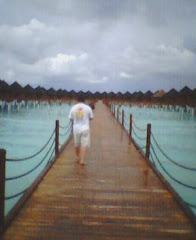ねぷた村探索が続く。
Watching the Neputa demonstration for the next group of tourists from the second floor.
2階から次の観光客の為のねぷたデモを観察。
This is called a sasara. In the early days before electricity, candles were used to light up the Neputa floats and they often caught on fire. The tips of the sasara were soaked with water to put out any fires.
ささら:昔、ねぷたの証明はろうそくが主流で、よくねぷたが火事になりました。そこで、このささらの先端に水を付け、火を消しました。
That concludes the Neputa Mura main exhibition, but there is still more. The following is a display room featuring the history of the Neputa festival, old books describing the Neputa, how the Neputa floats are made, and miniature Neputas of the Chinese zodiac.
ねぷた村のメインが終了しました、でもまだまだ見るところがあります。次の部屋はねぷたの歴史や、ねぷたについて古書、ねぷたの作り方と干支のミニねぷた。
A display showing the set-pu and flow of the Neputa Festival.
Taiko drums used in the Neputa festival. This particular taiko is called a shime taiko, and is also known as an akedo taiko. The largest taiko drum used in the Neputa festival in Hirosaki measures 4 meters!
Mini Neputa / ミニねぷた
Check out the illustrations in these old books - they're awesome!
An ex-pat mannequin? / マネキンが外国人?
At Neputa Mura, not only do you get a Neputa demonstration, but you get to check out the history, and following that, you can walk through a workshop area where you will find some masters working on making traditional items and toys.
ねぷた村でねぷただけではありません。ねぷたとねぷたの歴史を見たあと、その次が日本の伝統的なものを作る作業工房があります。こけし、たこ、こま等を作る職人さんが居て、自由に彼らに声をかけいろいろ質問して良いんです。
Top Maker / コマ職人
Kokeshi dolls / こけし
As we are in Tsugaru, our tour wouldn't be complete without listening to a Tsugaru shamisen performance.
青森県に居るので、津軽三味線の演奏も聴くべし。
Tsugaru shamisen display / 津軽三味線
After touring Neputa Mura, it was now time for lunch, but that will be the next post.
ねぷた村探索終了、昼食の時間になりました。でもそれはまた次のネタになります。




























































.jpg)


